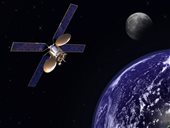Commonly referred to as GPS, it also includes devices that use this system to give position, such as GPS navigators.
The GPS system project was developed back in 1973 under the name of NAVSTAR, but only in 1991 it began to be usable (at certain times and areas) and in 1994 it became fully operational.
Initially, the U.S. government imposed the SA (Selective Availability) filter so that civilian operators could not benefit from maximum accuracy, thus degrading the error from 25 mt. to 100 mt. In 2000 they removed the SA filter, but this filter remains at any time re-insertable at the discretion of the US government.
The GPS system uses polar satellites in a number between 24 and 32, which run certain orbits at low altitude around the earth, covering the entire globe.
